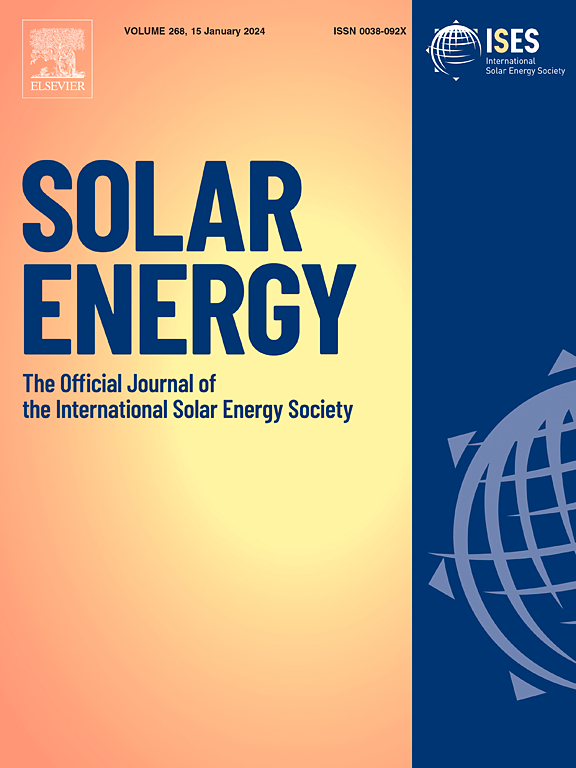Optimization of translucent perovskite solar cells based on MoO3/metal/MoO3 multilayer transparent electrodes
IF 6
2区 工程技术
Q2 ENERGY & FUELS
引用次数: 0
Abstract
Semitransparent perovskite solar cells (ST-PSCs) are very attractive in the field of building integrated photovoltaics (BIPV). The realization of high-performance ST-PSCs crucially relies on the development of transparent top electrodes capable of simultaneously achieving low sheet resistance and high optical transmittance. Among various configurations, Oxide/Metal/Oxide (OMO) multilayer architectures − such as MoO3/Ag/MoO3 or MoO3/Au/MoO3 − have demonstrated exceptional optoelectronic performance metrics. These structures leverage the metal layer’s electrical conductivity while utilizing oxide layers for both optical impedance matching and environmental protection, effectively suppressing interfacial recombination losses through work function alignment (ΔΦ < 0.3 eV). To realize highly transparent electrodes with excellent conductivity, in this study, we simulated three novel OMO transparent electrodes based on Au-Ag, Cu-Au, and Ag-Cu bilayer films as the top anode of translucent n-i-p chalcogenide solar cells, and the best devices showed power conversion efficiencies(PCE) up to 15.1 % and 15.2 %, respectively. The maximum average visible transmittance was 18.3 %, 19.4 %, and 20.6 %, and the maximum light utilization efficiency was 2.76 %, 2.87 %, and 3.13 %, respectively. Simulations based on these three types of thin-film cells will be beneficial to better investigate the effect of transparent electrodes on perovskite solar cells.
基于MoO3/金属/MoO3多层透明电极的半透明钙钛矿太阳能电池优化
半透明钙钛矿太阳能电池(ST-PSCs)在建筑集成光伏(BIPV)领域具有广泛的应用前景。高性能ST-PSCs的实现关键依赖于能够同时实现低片阻和高透光率的透明顶电极的发展。在各种配置中,氧化物/金属/氧化物(OMO)多层架构-例如MoO3/Ag/MoO3或MoO3/Au/MoO3 -表现出卓越的光电性能指标。这些结构利用金属层的导电性,同时利用氧化层进行光阻抗匹配和环境保护,通过功函数对齐有效地抑制界面复合损失(ΔΦ <;0.3 eV)。为了实现具有优异导电性的高透明电极,在本研究中,我们模拟了基于Au-Ag, Cu-Au和Ag-Cu双层膜的三种新型OMO透明电极作为半透明n-i-p硫族太阳能电池的顶阳极,最佳器件的功率转换效率(PCE)分别达到15.1%和15.2%。最大平均可见光透过率分别为18.3%、19.4%和20.6%,最大光利用效率分别为2.76%、2.87%和3.13%。基于这三种类型薄膜电池的模拟将有助于更好地研究透明电极对钙钛矿太阳能电池的影响。
本文章由计算机程序翻译,如有差异,请以英文原文为准。
求助全文
约1分钟内获得全文
求助全文
来源期刊

Solar Energy
工程技术-能源与燃料
CiteScore
13.90
自引率
9.00%
发文量
0
审稿时长
47 days
期刊介绍:
Solar Energy welcomes manuscripts presenting information not previously published in journals on any aspect of solar energy research, development, application, measurement or policy. The term "solar energy" in this context includes the indirect uses such as wind energy and biomass
 求助内容:
求助内容: 应助结果提醒方式:
应助结果提醒方式:


